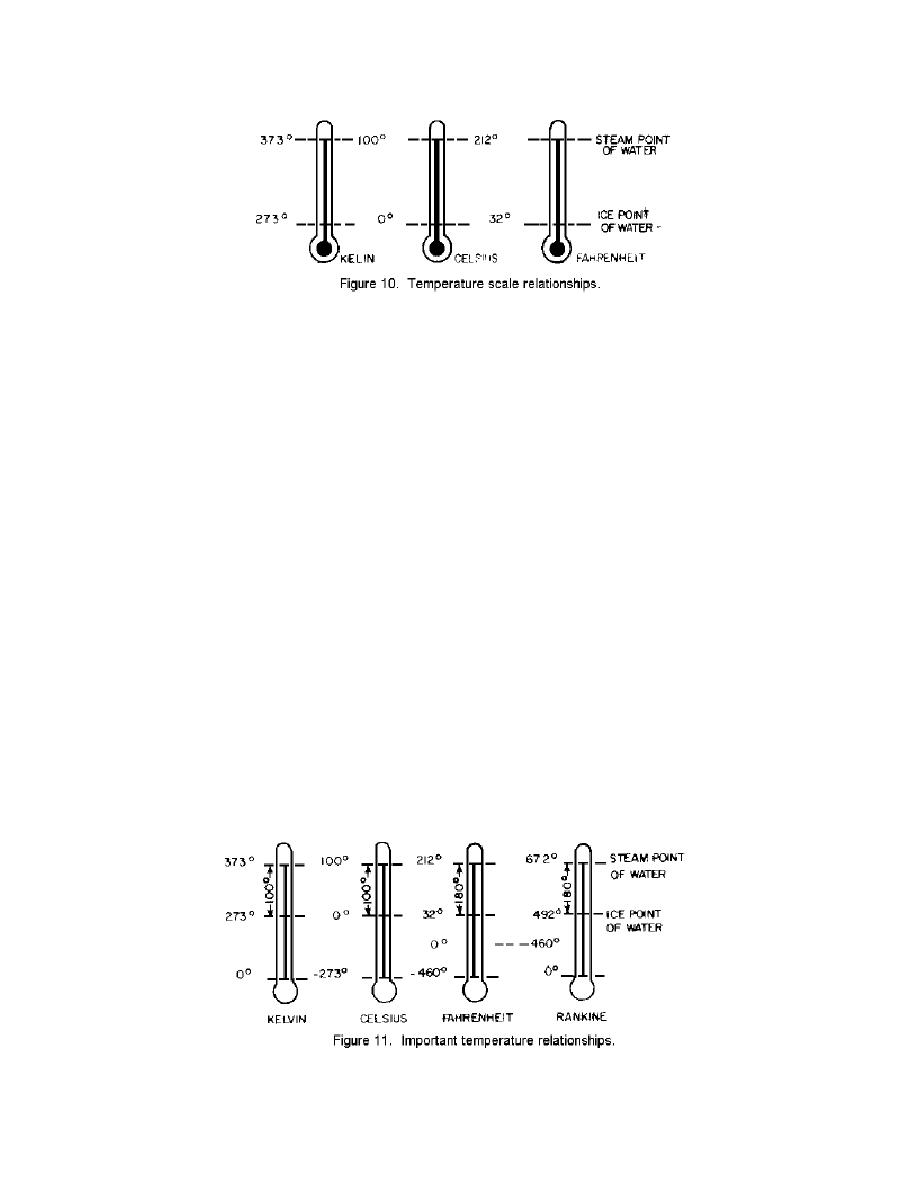
From the relationship between ,C and ,F, the following formulas are derived: ,F = 9
(,C) + 32 ,C = 5 (,F - 32) - - 5 9
Using the appropriate formula, what temperature on the Fahrenheit scale would be
equivalent to +40,C?
If you answer is 104, F you are correct. Plugging values into a formula isn't too hard.
Example: 9/5 X 40 +32 is equal to 104,F.
Now try this one. What temperature on the Celsius scale is equivalent to a -40,F?
What about that! You are right, if your answer is -40,. ,C = 5 (-40-32) = 5 (-72) = 5 X (-
8) = -40. C = -40,. - - 9 9
There is only one point on the Celsius and Fahreheit scales that is identical in value and
temperature, the -40, point. Quite often in scientific work, -40, is used where the scale
is not stated because this fact is understood.
Let's try one more conversion. What temperature on the Fahrenheit scale would be
equivalent to absolute zero? Your answer: -459,F. Very Good! If -273, C is absolute
zero, ,F = 9/5 (-273) + 32,F = -459.4. Actually -460 is closer, due to the error in the
factor 273 being rounded off to three digits. The answer to the problem is an important
point which will be discussed.
10. RANKINE SCALE
Just as the Kelvin and Celsius scales are related, the Rankine scale is related to the
Fahrenheit scale.
The Rankine scale, which is used in the United States by engineers, starts at absolute zero
and reads up in Fahrenheit increments. Referring to figure 9, you will see the number 492
on the Rankine (R') scale. If you subtract 32 from 492 you will have the number 460
which we previously found. Since the Rankine scale starts at absolute zero all
temperature indications are positive values
To convert ,R' to ,F subtract 460 from ,R' and your answer is in ,F.



 Previous Page
Previous Page
